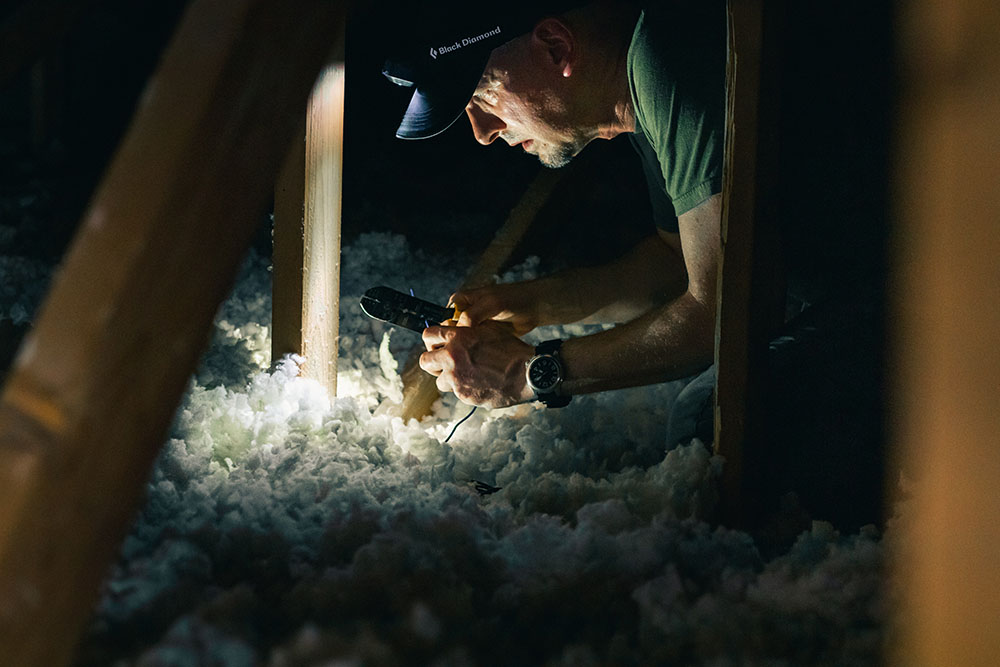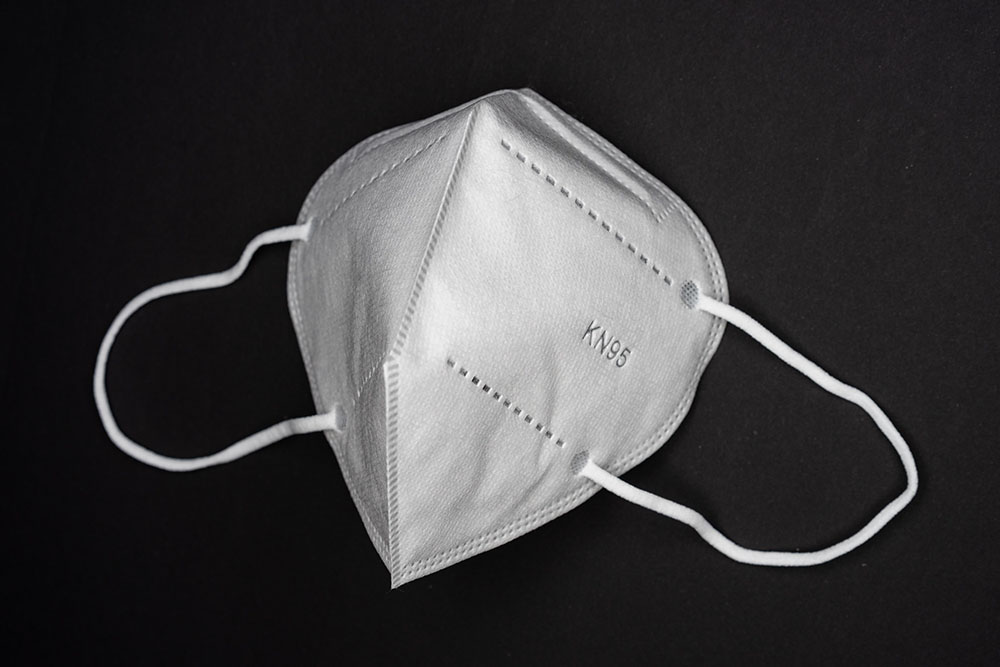![[LIST] Mould Allergy Symptoms: Here’s What You Should Look Out For [LIST] Mould Allergy Symptoms: Here’s What You Should Look Out For](https://911waterdamageexperts.com/wp-content/uploads/2021/08/mould-allergy-2.jpg)
Important Mould Allergy Symptoms And Other Crucial Information
By: 911 Water Damage Experts
The challenging thing about cold and flu symptoms is that they aren’t always cold and flu symptoms.
If you find your cold dragging on for much longer than they typically do, you may start to wonder if your coughing, sneezing, and wheezing could be linked to something else. And they just might be.
If your area has recently been plagued by heavy rain, flooding, or even intense humidity, and you’ve noticed some suspicious-looking stains, it can be worth exploring whether black mould could be to blame.
The symptom similarities are uncanny, so it might be in your best interests to do a little digging and get to the bottom of what’s to blame.
What Is Mould?
Mould is a fungus of tiny organisms that can be a variety of colours like purple, green, orange, black, and white. There are over 100,000 varieties, and most of them are found outside your home rather than inside it.
However, most mould varieties grow where there is moisture, and some can end up in your home if moisture or dampness is present. Mould is also quite a tricky beast in the respect that the spores are tiny.
You can’t see them when you breathe them in, which means you may not link any physical symptoms you’re experiencing to mould at all.
Where Do You Find Mould?
In short, everywhere. You can find mould everywhere. From jumping in a leaf pile in the fall to forgetting to ventilate your bathroom, there are plenty of everyday actions that can lead to mould almost anywhere in your home.
You can find it on building materials after heavy rain and flooding, on window sills in moist rooms like bathrooms, and even piles of damp clothes you’ve been forgetting to wash for days.
What Are Mould Allergy Symptoms?
Now, this is where it gets interesting. You know what mould looks like, what causes it, and where to find it, but do you know the impact it can have on your health if left to grow and spread?
A mould allergy can end up looking a lot like a common cold or the flu.
From wheezing and chronic sneezing to an itchy throat, coughing, and red eyes, you may be surprised at just how many commonalities these conditions have.
Some of the more common symptoms of a mould allergy include:
-Nasal congestion
-Runny nose
-Scaly and dry skin
-Chest tightness
-Sneezing
-Wheezing
-Coughing
-Inflamed or red eyes
-Itchy throat
-Difficulty breathing
-Snoring when it’s out of character
You may be more at risk of experiencing some of these symptoms or a worse reaction if you have a history of allergies, live somewhere with high humidity or poor ventilation, work in an occupation where mould exposure is high, or live in a property damaged by water.
Is Mould Dangerous?
Some of the symptoms of mould exposure can be mild, which may give you a false sense of security.
Surely a bit of coughing, wheezing, and sneezing isn’t so bad? The truth is, some mould types like black mould can be incredibly harmful.
Let’s say your property experienced flooding, which led to uncontrolled black mould that you did nothing about.
Your home occupants could be at risk of a wide range of harmful effects like nausea, dizziness, fainting, breathing problems, and even neurological symptoms.
Mould can also penetrate your skin, leading to swelling, rashes, bleeding, and flaking. Even some complications can arise, such as mould-induced asthma, hypersensitivity pneumonitis, allergic fungal sinusitis, and allergic bronchopulmonary aspergillosis.
Given how easy it is to call a mould remediation expert for help, there’s simply no excuse for members of your family to be exposed to potentially toxic mould.
Is It Mould Or Is It A Cold?
That is the million-dollar question: do I have a cold, or do I have a mould problem in my home? If you are experiencing any cold or flu symptoms, yet you don’t have a cold or a ‘Flu (or COVID-19), it might be time to consult an allergist for a mould allergy test.
They can perform skin and blood tests to identify whether mould is to blame and even isolate the type of mould it is.
You may then be able to retrace your steps and determine where you may have come into contact with it.
How To Treat Mould Allergy Symptoms
Once a mould allergy has been confirmed, it’s crucial to start focusing on treatment. Medication may help reduce some of the symptoms, but eradicating the mould is going to be your best course of action.
Fortunately, there are plenty of ways to do this. Always make sure you dry any areas that have become wet in your home. For example, if you spill something in the kitchen or bathroom, mop it up.
Always remove areas of standing water, and don’t neglect that drip pan in your fridge that requires cleaning from time to time.
Clean your home’s gutters, invest in exhaust fans and dehumidifiers, and open windows to allow natural drying and ventilation to occur.
If you believe mould or bacteria in your home is contributing to your illness, don’t hesitate to contest a professional mould remediation service.
How To Prevent A Mould Allergy
Mould is present inside and outside your home, which means there may come a time when you are exposed to it and have your mould allergy symptoms exacerbated.
While hiring a mould removal company can allow you to remove mould from your home, there are still likely to be exposure opportunities you can’t avoid.
For example, you may expose yourself to mould while raking leaves in your backyard. You can take a proactive approach to this task by wearing a dust mask.
Taking decongestants and antihistamines prescribed by your doctor may also be a wise choice.
After mould exposure, take a shower and consider rinsing your nose out with a saline solution. Doing so may remove any spores lingering on your body that may increase your risk of mould-related symptoms.
Managing mould in everyday life can be complicated, but it’s entirely manageable with small daily changes and reliance on experts for help.
How To Prevent Mould Growth In Your Home Or Commercial Building
Control Moisture Levels: Mold thrives in moist environments, so controlling moisture levels is crucial. Use dehumidifiers in damp areas of your home, ensure proper ventilation in bathrooms, kitchens, and laundry rooms, and promptly repair any leaks or water damage.
Use Exhaust Fans: Proper ventilation is essential for preventing moisture buildup. Use exhaust fans in bathrooms and kitchens to remove steam and humidity during and after showers, cooking, and other activities that produce moisture.
Monitor Indoor Humidity: Keep indoor humidity levels below 60% to inhibit mold growth. Use a hygrometer to monitor humidity levels and take steps to reduce humidity if necessary, such as using air conditioners or opening windows for ventilation.
Fix Leaks Promptly: Address any leaks or water intrusions promptly to prevent moisture from accumulating and creating conducive conditions for mold growth. Inspect plumbing fixtures, roofs, windows, and foundations regularly for signs of leaks or water damage.
Improve Air Circulation: Good air circulation helps prevent moisture buildup and promotes drying. Keep furniture and belongings away from walls to allow air to circulate freely, and avoid blocking vents or air ducts with furniture or curtains.
Use Mold-Resistant Products: Use mold-resistant building materials, such as mold-resistant drywall, paint, and insulation, in areas prone to moisture, such as bathrooms, basements, and crawl spaces.
Keep Surfaces Clean and Dry: Regularly clean and dry surfaces prone to moisture, such as sinks, countertops, shower stalls, and windowsills. Use mildew-resistant cleaners and thoroughly dry surfaces after cleaning to discourage mold growth.
Reduce Clutter: Clutter can trap moisture and provide hiding places for mold to grow. Keep living spaces clean and clutter-free to facilitate air circulation and reduce the risk of mold growth.
Inspect and Maintain HVAC Systems: Regularly inspect and maintain heating, ventilation, and air conditioning (HVAC) systems to ensure proper operation and airflow. Clean or replace air filters as recommended to prevent mold spores from circulating indoors.
Address Outdoor Drainage Issues: Ensure proper drainage away from your home’s foundation to prevent water from pooling around the structure. Maintain gutters, downspouts, and landscaping to direct water away from the building and minimize moisture infiltration.
If you have any questions about mould remediation and mould removal feel free to call us at 1-833-WE-DRY-IT any time 24/7/365 all the time. We’re there when you need us!
Related Posts
Mould inspection guide: how much does it cost and when to get one
Most common and unexpected places where you can find mould growth
Got mould in my attic: what do I do?
How to prevent mould growth after a flood
A pipe burst in my business building – what do I do?
What to do when a water pipe bursts in your apartment
Hire the right mould removal company by asking these vital questions
15 interesting facts about mould
What causes mould damage and what you can do about it
Top common signs of water damage: here’s what to look for








